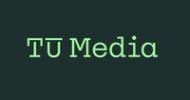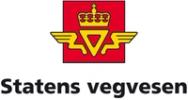Det blir ifølge IKT-Norge årlig solgt over 25 millioner TV-apparater i EU/ EØS landene årlig. 12 prosent av Tv-ene som nå blir solgt er flatskjermer. I Norge ligger imidlertid dette tallet vesentlig høyere. 55 til 60 prosent av alle nye Tv-er som blir solgt i Norge er nå flatskjermer. Men kun en begrenset andel er HDTV-er.
Canal Digital begynte den 1. september med høyoppløselige sendinger i en egen kanal, men skal man se effekten av et vesentlig bedre TV-bilde, krever dette en virkelig HDTV.
IKT-Norge har utført en sjekkrunde i Østlandsområdet som viser at butikkene har meget dårlig kunnskap om HDTV. De ble vitne til direkte villedende markedsføring/salg i flere ledende butikker for TV-er på Østlandet.


Organisasjonen mener det er liten grunn til å tro at forholdene er bedre andre steder i landet.
"Norge har dessverre blitt en dumpingplass for billige flatskjermer som ikke oppfyller HDTV-standarden. Dette fordi det så langt trolig har vært lite fokus på HDTV i Norge og mest fokus på pris. Forbrukerne må nå se etter HDTV-logoen, for enten er det en HDTV det er snakk om, eller så er det ikke en HDTV. IKT-Norge har grunn til å tro at mange forbrukere tror at de har kjøpt en moderne TV, som de neste år kan benytte til å se HDTV-sendingene fra blant annet fotball-VM i Tyskland. Selvfølgelig kan man fortsatt se TV, men altså ikke høyoppløselige sendinger, som nå etter hvert kommer", skriver IKT-Norge i en pressemelding.
For at en Tv skal kunne selges eller fremstå som HDTV, skal den oppfylle helt konkrete minimumskrav og den skal være merket med en særegen HDTV-logo. TV-er som ikke har dette merket, er ikke klare for å ta i mot de nye sendingene som etter hvert kommer. I markedsføringen brukes det ifølge IKT-Norge en rekke misvisende begreper som at den nye TV-en er HDTV-kompatibel, eller HDTV-forberedt, eller har HDTV-muligheter. Dette er ifølge IKT-Norge direkte feilaktig informasjon. Enten er TV-en HDTV og oppfyller gitte minimumskrav, eller så er den det ikke.
Ifølge IKT-Norge blander aktive, men kunnskapløse selgere begrepet HDTV med bredformat-TV, som overhodet ikke har noe med HDTV å gjøre.
EICTA den europeiske bransjeorganisasjonen for informasjonsteknologi og forbrukerelektronikk har med virkning av 31. august fastsatt minimumskrav for HDTV-mottakere. Dette for å hjelpe forbrukerne til å skille produkter på en enkel og grei måte. EICTA har tidligere stått bak HD-ready logoen som ble innført i januar 2005.
Den vil nå bli utfaset til fordel for HDTV-logoen. IKT-Norge er medlem av EICTA og generalsekretær Per Morten Hoff i IKT-Norge har de siste to årene sittet i styret i EICTA. IKT-Norge vil følge opp bruken av HDTV-merkingen i Norge på vegne av EICTA.
Produkter som er merket med HDTV-logoen fra EICTA skal garantere forbrukere i hele Europa at de kan ta imot og se HD-signaler på merkede produkter via satellitt, kabel eller bakkenett.
På den store forbrukerelektronikkmessen IFA i Berlin, uttalte Rudy Provoost, president i EICTA og konserndirektør i Phillips Consumer Electronics følgende:
- HDTV er den største happeningen innen forbrukerelektronikk siden innføringen av farge-TV for mer enn 30 år siden. Vi tror at HDTV vil nå kritisk masse høsten 2006, og det er uendelig viktig at forbrukerne føler seg trygge når de kjøper ny teknologi. Derfor har EICTA tatt dette initiativet for å hjelpe forbrukerne og for å styrke elektronikkbransjens seriøsitet.
Per Morten Hoff i IKT-Norge anbefaler nå alle som kjøper flatskjermer til TV-bruk å kjøpe skjermer som oppfyller HDTV-standarden. For at forbrukerne skal føle seg trygge, skal man se etter merket HDTV–ready eller HDTV. Den enkelte TV skal være merket med denne logoen. IKT-Norge ønsker å føre tilsyn med at disse kravene blir oppfylt. IKT-Norge vil også samarbeide tett med Stiftelsen EE-bransjen, som samler store deler av radio- og TV-bransjen om å spre informasjon om merkeordningen og de nye minimumskravene som er innført.
Hvilke merker som er HDTV–klare kan man til enhver tid se på EICTAs hjemmeside. Informasjonen vil også legges ut på IKT-Norges nettsted fra og med slutten av denne uken.
Nedenfor er listes minimumskravene for HDTV-apparater slik de er definert av EICTA:
EICTA “HDTV” Minimum Requirements for HD Television Receivers
1. Introduction and Context
The EICTA “HDTV” Minimum Requirements for HD Television Receivers aim to create a clear market norm for what constitutes a receiver capable of receiving HD television transmissions on satellite, cable or terrestrial media.
The EICTA “HDTV” Minimum Requirements for HD Television Receivers apply to free-to-air and PayTV HD television receivers. The EICTA “HDTV” Minimum Requirements for HD Television Receivers define the connection of HD television receivers without a display to “HD ready” display devices, and define the requirements for fully integrated HD digital TVs. Additional requirements have been defined for HD television receivers with recording capability.
Examples of HD devices that could qualify for the EICTA “HDTV” logo for HD Television Receivers are:


• HD Television Broadcast Set-top box
• HD Television Broadcast Set-top box with built-in HDD
• HD Television Broadcast Receiver with built-in HD recorder
• HD Integrated digital TV
The logo program will be implemented based on a self-certification regime. This specification may be adapted by EICTA when deemed necessary, typically to respond to further market developments or to address misinterpretations.
2. “HDTV” Minimum Requirements for HD Television Receivers
2.1 Scope
The application scope of the “HDTV” Minimum Requirements for HD Television Receivers are devices with integrated digital HD reception capability for DVB compliant Satellite, Cable or Terrestrial digital TV signals, for example set-top boxes, integrated digital TVs and recorders. HD set-top boxes and HD recorders share the need for an HD output compatible with “HD ready” display devices. Integrated HD TVs do not, but shall be compliant with the EICTA “HD ready” minimum requirements for display devices [1]. Compliance with the “HDTV” Minimum Requirements for HD Television Receivers consequently signifies different interface requirements depending on the nature of the equipment. The term “HD television receiver” is used to indicate the category of devices as above.
2.2 Logo
2.3 Reception Function Requirements for HD television receivers
The HD television receiver supports the following modulation and channel coding schemes:
1. For a satellite HD television receiver:
- DVB-S according to [2], and
- DVB-S2 Non-Backwards Compatible (NBC) Broadcast Mode according to [3]
An upper symbol rate of at least 30 megasymbols per second shall be supported.
For a cable HD television receiver:
- DVB-C including 256 QAM according to [4],
For a terrestrial HD television receiver:
- DVB-T as per E-Book [13]
The HD television receiver complies with the following system layer specification:
2. - MPEG-2 Systems, and
- MPEG-2 Systems Amendment 3 Transport of AVC Video Data over ITU-T Rec H.222 / ISO/IEC 13818-1 according to [5], [9]
The HD television receiver control system for service discovery and installation, channel and component selection and basic OSD and EPG (related to mandatory DVB SI functions as per [12] for service names as carried in the SDT and event information as carried in EITpresent/following) complies with:
3. DVB-SI in accordance with [6] and [12], for terrestrial systems also in accordance with [13].
The HD television receiver Video decoder supports the following compressed video formats, up to the resolution of 1280 x 720 progressive and 1920 x 1080 interlaced:
4. MPEG-4 AVC HP@L4 for 50Hz according to [9] (implying [8]), and
5. MPEG-2 MP@HL for 50Hz according to [9] (implying [7])
The HD television receiver audio decoder supports the following audio formats:
6. Enhanced AC-3 according to [9] (implying [11]), and
7. MPEG-1 Layer II (2.0) according to [9] (implying [10])
2.4 Output Interface requirements for HD television receivers without
display for video reproduction
HD television receivers without a display for video reproduction have an HD video output that provides a reproduction of the HD source (television broadcast) that will allow it to interface to an “HD ready” display device; i.e.:
8. Provides:
- analogue YPbPr according to [17], or
- DVI according to [14], or
- HDMI according to [15]
9. If the HD television receiver is intended to be used with HD sources (television broadcasts) some of which require content protection to permit HD quality output, then the HD television receiver should implement an HDMI or DVI interface with support for HDCP (according to [16]).
10. Can reproduce any HD source (television broadcast) on its HD outputs in at least one of the following HD formats and timings with a 16:9 aspect ratio:
a. 1280x720 @ 50Hz progressive, or
b. 1920x1080 @ 50Hz interlaced
11. The HD television receiver provides a mode in which it delivers 1280x720p and 1920x1080i, 50Hz HD sources (television broadcasts) in their original format (unscaled) and timing on its HD output to an “HD ready” display device.
An HD television receiver may operate exclusively in this mode, or may have it selectable via a setup menu, allowing the user to disable scaling by the HD television receiver.
For HDMI and DVI, when available the HD television receiver should rely on the (E-)EDID information returned by the display device - indicating the video formats the display device can receive and render - to stay within the capabilities of and avoid interoperability issues with non-HD / non-“HD ready” display devices.
HD television receivers without a display for video reproduction have an audio output that provides a reproduction of the audio of HD sources (television broadcasts) on:
12. a consumer electrical or optical digital audio interface according to [18], carrying:
- two channel PCM in case of MPEG1- layerII format reception,
- originally received bitstream in case of AC-3 reception, or
- transcoded AC-3 bitstream in case of Enhanced AC-3 reception, and
13. RCA stereo:
- stereo out or mono-out on two channels for MPEG-1 layer-II,
- two channel downmix in case of multi-channel AC-3 or Enhanced AC-3 reception, and
14. if HDMI is available it is able to carry the audio signal as:
- two channel PCM, and optionally
- originally received bitstream in case of AC-3 reception, or
- transcoded AC-3 bitstream in case of Enhanced AC-3 reception.
2.5 Specific requirements for HD television receivers with display for video reproduction (Integrated High Definition digital TVs)
The following requirements are applicable to HD television receivers with a display for video reproduction:
15. HD television receivers with a display for video reproduction fully comply with the EICTA “HD ready” Minimum Requirements for display devices [1].
16. HD television receivers with a display for video reproduction provide for multichannel audio out on a consumer electrical or optical digital audio interface (as per requirement 12 above).
2.6 Additional Requirements for HD television receivers with recording capability for “off-air” signals
Under the condition that there are no contractual or legal obligations constraining the recording of broadcasted content or playback of recorded content, and provided such is allowed by the content protection status of the received signal, HD television receivers with recording capability for “off-air” signals are able to:
17. - record in HD quality any HD source (television broadcast) they can receive and decode, and
- subsequently playback the content in HD quality, and
- maintain the aspect ratio of the original signal in the above process, and
- can record accompanying sound (including multi-channel sound) and
- can playback the recorded sound so that an output can be generated equivalent to the originally received signal.
3. References
[1] EICTA (http://www.eicta.org) - "HD ready" Minimum Requirements / EICTA Conditions for HD Labelling of Display Devices
[2] ETSI EN 300 421 V1.1.2 (1997-08): “Digital Video Broadcasting (DVB); Framing structure, channel coding and modulation for 11/12 GHz satellite services”
[3] ETSI EN 302 307 V1.1.1 (2005-03): “Digital Video Broadcasting (DVB); Second generation framing structure, channel coding and modulation systems for Broadcasting, Interactive Services, News Gathering and other broadband satellite applications”
[4] ETSI EN 300 429 V1.2.1 (1998-04): “Digital Video Broadcasting (DVB); Framing structure, channel coding and modulation for cable systems”
[5] ITU-T Rec H.222.0 / ISO/IEC 13818-1 (2nd edition, 2000): Information Technology – Generic Coding of moving pictures and associated audio: Systems and ITU-T Rec H.222.0 / ISO/IEC 13818-1:2000/Amd.3:(2003). Amendment 3: Transport of AVC video data over ITU-T Rec H.222 / ISO/IEC 13818-1 streams.
[6] ETSI EN 300 468 V1.6.1 (2004-11): "Digital Video Broadcasting (DVB); Specification for Service Information (SI) in DVB systems”
[7] ITU T Rec. H.262 | ISO/IEC 13818-2 (2nd edition, 2000): "Information Technology - Generic Coding of moving pictures and associated audio: Video"
[8] ITU T Rec. H.264 | ISO/IEC 14496 10 AVC: "Advanced Video Coding for Generic Audiovisual Services", May 2003 / ISO/IEC 14496-10:2004/AM 1, Part 10: Advanced Video Coding AMENDMENT 1: AVC fidelity range extens ions
[9] ETSI TS 101 154 V1.7.1 (2005-06): “Digital Video Broadcasting (DVB); Implementation guidelines for the use of Video and Audio Coding in Broadcasting Applications based on the MPEG-2 Transport Stream”
[10] ISO/IEC 11172-3 (1993): "Information Technology - Coding of moving pictures and associated audio for digital storage media at up to about 1,5 Mbit/s - Part 3: Audio”
[11] ETSI TS 102 366 V1.1.1 (2005-02): Digital Audio Compression (AC-3, Enhanced AC-3) Standard
[12] ETSI ETR 211 ed.2 (1997-08): Guidelines on implementation and usage of Service Information (SI)
[13] ISO/IEC 62216-1 Digital Terrestrial Receivers for the DVB-T system, 2001
[14] DVI - DDWG, “DVI Visual Interface”, rev. 1.0, April 2, 1999 as further qualified in EIA/CEA-861 rev.B, “A DTV Profile for Uncompressed High Speed Digital Interfaces” May 2002, furthermore allowing both DVI-D and DVI-I connectors, requiring compliance to the 50Hz profile, and requiring support for both 720p and 1080i video formats.
[15] HDMI - HDMI Licensing, LLC, “High-Definition Multimedia Interface”, rev. 1.0, December 9, 2002
[16] HDCP - Intel, “High-Bandwidth Digital Content Protection System”, rev. 1.1, June 9, 2003 (Note: on DVI HDCP rev. 1.0 or rev. 1.1 will apply)
[17] YPbPr - CEA-770.3 rev. C, November 2001
[18] Consumer electrical or optical digital audio interface - as defined per IEC 60958-1 Edition 2.0 (2004-03) “Digital audio interface - Part 1: General”, IEC 60958-3 Edition 2.0 (2003-01) “Digital audio interface - Part 3: Consumer applications”, and the applicable parts of IEC 61937 “Digital Audio - Interface for non-linear PCM encoded audio bitstreams applying IEC 60958”





